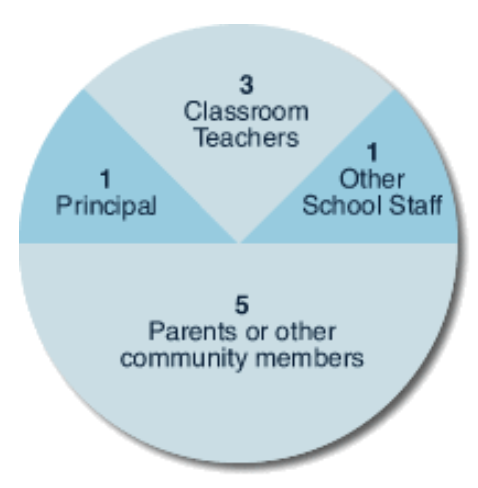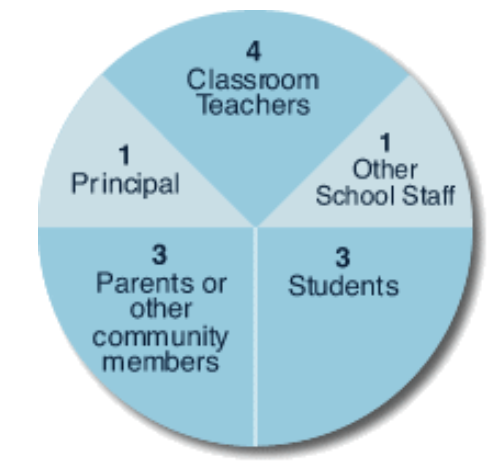School Site Council (SSC) Handbook
Link to this section
School Site Council (SSC) Handbook
Learn about how School Site Councils operate and their guidelines.
What is a school site council, and who are the members? Link to this section
The School Site Council (SSC) is an elected or selected group representative of the school’s staff, parents, and in secondary schools, students.
Each SFUSD school must have an elected School Site Council (SSC) to represent parents, students, community members, and school staff in the school governance process. The SSC has a number of important responsibilities, including:
- Reviewing and analyzing student achievement data,
- gathering community input,
- helping develop the Single Plan for Student Achievement (SPSA) and the school site budget,
- and monitoring the implementation of the plan and budget.
How Members Are Chosen
Link to this section
SSC Selection Process
The SSC selection process is determined by each district, and outlined in district policy and/or SSC bylaws*.
*Documentation of the process must be maintained for 3 years.
Composition of the SSC is specified in the California Ed. Code Section 52852 as follows:
- The SSC shall ensure parity between (a) the principal, classroom teachers, and other school personnel; and (b) parents or other community members selected or elected by parents.
More About Composition of the SSC
In both the elementary and secondary SSC, classroom teachers shall comprise the majority of persons represented under subdivision (a) of this section.
At the discretion of the local governing board, the middle school may, but is not required to, include student representation on the SSC.
- Parent or community members, representing that group, may not be employed at the school site.
- “Other school personnel” refers to classified and/or certificated staff; i.e., school nurse, resource teacher, vice principal, instructional aide, secretary, etc.

Sample Composition of an Elementary SSC
On this Elementary SSC of ten persons the number of school personnel is exactly equal to the number of parents and/or community representatives. The five school staff members are made up of: 1 Principal (the only assigned member of the SSC.), 3 teachers, and 1 “other school staff.” The staff side totals 5. This means the parent/community side must also be comprised of a total 5 people.

Sample Composition of a Secondary SSC
At the secondary level the council shall be constituted to ensure parity between (a) school staff members (principal, classroom teachers and other school staff) and (b) parent/community member and students (EC 52852). In addition, the number of parent/community members must be equal to the number of student members. In other words, one-half of the members must be school staff (with classroom teachers comprising the majority of this half of the council), one-quarter of the members must be parents/community members, and one-quarter of the members must me students.
For example, a 12-member SSC could satisfy this requirement:
- Six School staff members (1 – principal, 4 – classroom teachers and 1 – other school staff), and
- Three Parent/community members, and
- Three Student members
Responsibilities of the SSC Link to this section
The responsibilities of the SSC are to:
- Annually facilitate the revision/update of the school goals, improvement strategies and planned expenditures which are outlined in the Single School Plan for Student Achievement.
- Review and/or recommend the updated Single School Plan to the local governing board for their approval. SSCs have decision-making purview over restricted funding- Title I.
- Ensure the school goals and improvement strategies are measurable and based on an analysis of verifiable state and local data.
- Ensure the goals, improvement strategies, and proposed expenditures are legally compliant and support the district’s goals and LEA (Local Educational Agency) plan
- Seek input from all advisory committees.
- Monitor the implementation of the approved School Plan, making modifications as necessary.
- Measure the effectiveness of the improvement strategies and expenditures.
- Maintain documentation of all SSC actions and activities for three years.
Operating the SSC Link to this section
It is recommended local School Board policy and/or SSC bylaws specify:
- The means of selecting SSC members and officers.
- Terms of office for members/officers.
- Method of membership replacement when midterm vacancies occur.
(Note: issues and protocol in SSC bylaws vary from site to site; items not covered in bylaws, if they fall outside of regulation, have undetermined protocol by default)
- The roles and responsibilities of the SSC.
- The roles and responsibilities of SSC officers.
School Site Councils operate under the rules and regulations of the Greene Act, EC Section 35147(c) and should be conducted according to Robert’s Rules of Order.
- The SSC Chairperson and Principal develop the agenda for each meeting.
- The SSC agenda is publicly posted 72 hours in advance of each meeting.
- SSC actions are limited to the publicly posted agenda items.
School Site Council Fall Summit- October 2023 Link to this section
On October 14th, 2023, parents, caregivers and educational partners engaged in an opportunity to learn about and share best practices towards improving student outcomes. The work of School Site Councils is essential to ensuring we achieve our Vision, Values, Goals and Guardrails while ensuring we serve each and every student in our district, especially those within our focal student populations:
- African American/Black students
- English Language Learners
- Native Hawaiian Pacific Islander students
- Students w/ IEPs
- Low socio-economic status students
- Foster Youth
Thank you for your support in our effort and thank you for taking time to review the presentations from event. We look forward to seeing the progress made when we come together again for the Spring Summit!
This page was last updated on May 15, 2025

